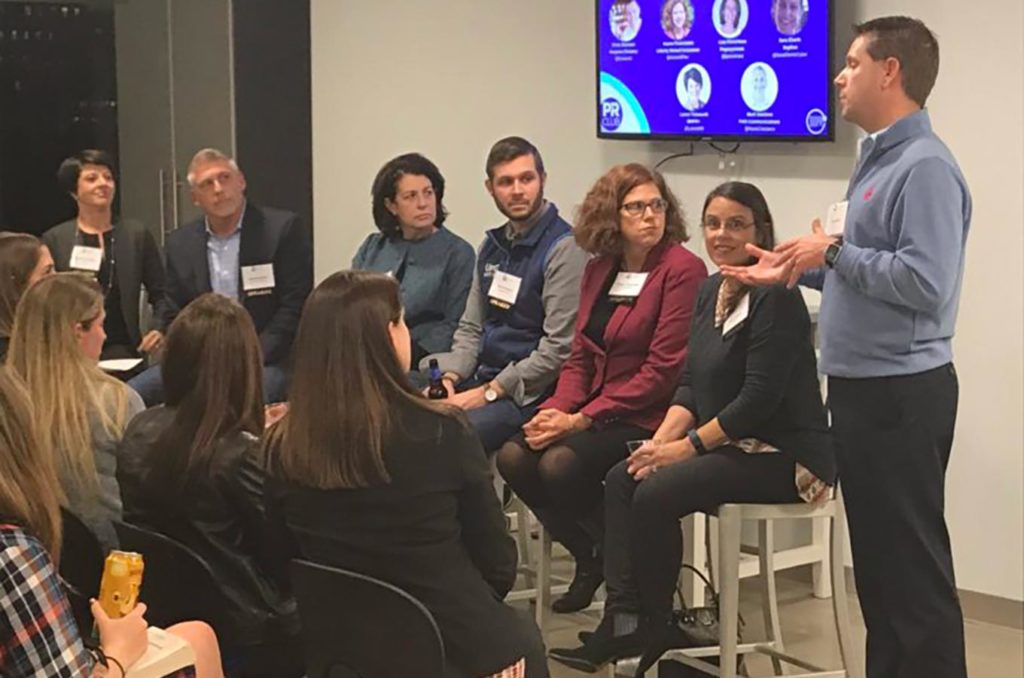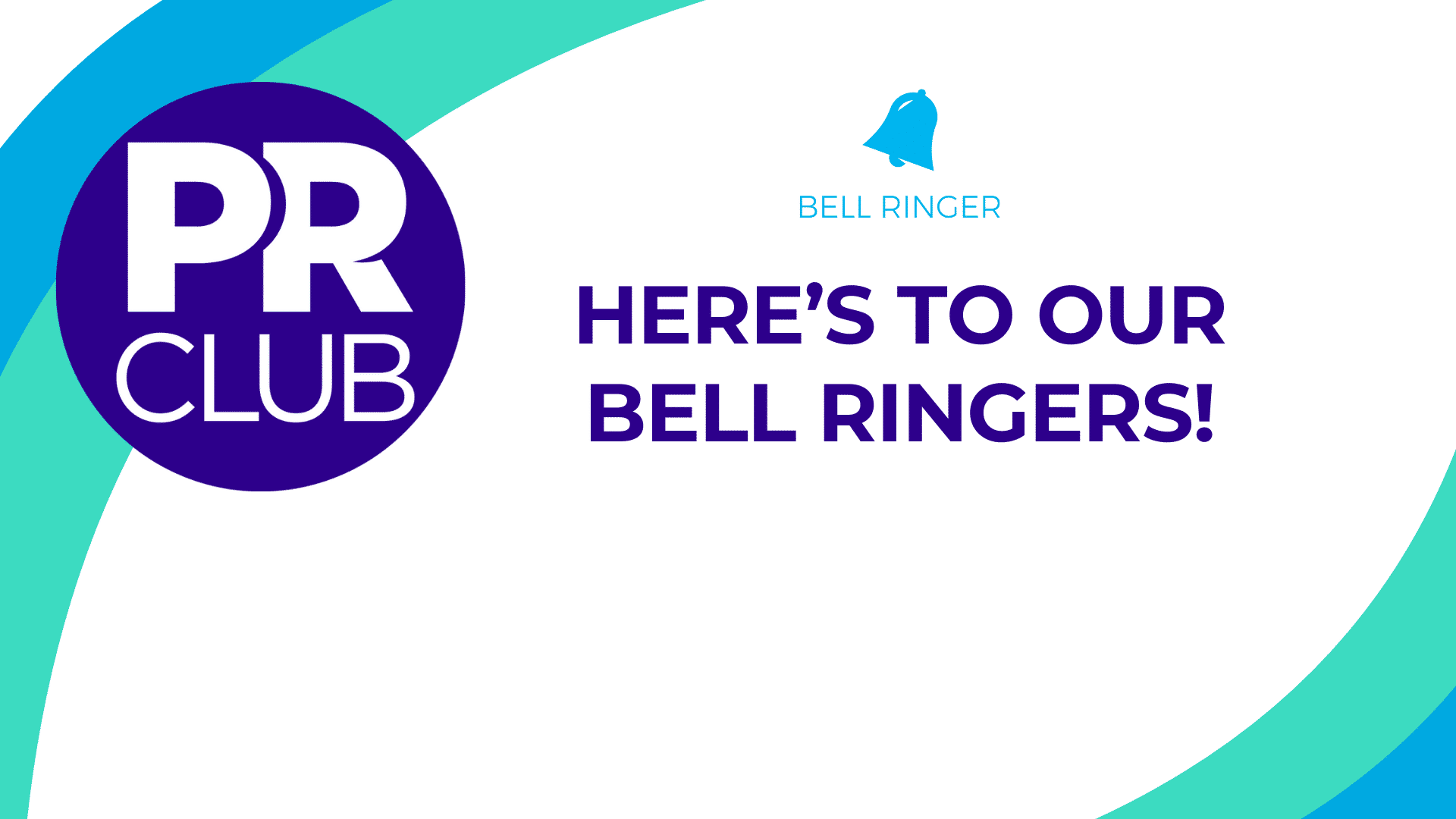At the heart of our work as PR professionals, it’s not about the planning or strategy, the outputs or outcomes. It’s about relationships. Whichever side you sit on, and whether you work at a major corporation or a startup, or you’re a solo practitioner or part of a multi-disciplinary agency, the interpersonal dynamic is so critical to success.
The PR Club recently hosted a panel event with six industry professionals discussing what goes into winning and retaining clients today, with important takeaways for client- and agency-side practitioners and other consultants. “Cultivating Successful Client-Agency Relationships” was sponsored by 360PR+ and featured a panel comprised four senior, in-house marketing and public relations leaders and was co-moderated by two agency leaders. During a vibrant, 90-minute dialogue, panelists shared their insights on the critical elements for building long-term client-agency relationships, what prompts change and which criteria are most important in a review process.
Moderated by Laura Tomasetti, CEO of 360PR+, and Mark Nardone, Executive Vice President of PAN Communications, speakers included:
- Chris Bonacci, Vice President, Marketing, Harpoon Brewery
- Sara Eberle, Senior PR Manager, Sophos
- Karen Pevenstein, Director of Public Relations, Liberty Mutual Insurance
- Lisa Pintchman, Vice President, Corporate Communications, Pegasystems
Those who attended heard a few key pieces of feedback being frequently discussed. This included how both sides knew when it was time for change, why transparency is so important for both parties, how to earn trust and what metrics matter the most – to name a few.
Below are some of those key insights, which are particularly important as you plan and begin to implement 2019 initiatives.
- What Leads You to The Decision to Change Agencies
The panelists agreed that the biggest indicator that it’s time for change is when there just wasn’t a “fit.” Whether that was due to a lack of chemistry, frustration or burnout, lack of understanding of a shared purpose, or being on the same page about expectations.
The panelists compared a client-agency relationship to any relationship – it’s not that both parties aren’t doing their best, but sometimes it just doesn’t work out. It’s important to keep in mind that there will be good days and there will be bad days, but if you feel like you’re doing everything in your power to make the relationship work and it’s still failing, sometimes that means it’s time to move on.
Takeaway: External partners are a part of the internal team, for better or for worse. But if there is a lack of chemistry or another obvious issue in regard to “fit,” it’s better for both parties to go their separate ways.
- The Importance of Transparency
All panelists agreed: It’s critical to be as transparent as possible. Going back to the first point, transparency directly impacts chemistry. Since the agency is your partner, you should share as much information as possible with them. While it may not be possible to share every in-house detail, the more that can be provided, the better.
Transparency isn’t just telling your team what’s coming, allowing them to prepare for announcements. It’s also being honest about the existing internal challenges, what success looks like, and what will make the executives happy. The beauty of a client-agency relations is that one partner’s success is the other partner’s success – and you should be treating both sides as one complete team.
Takeaway: The more transparent you can be – about the good and the bad – the more the agency becomes an extension of the in-house team. And one cohesive team is better for success on both sides!
- It’s All About Trust
During the panel, a moderator asked an important question: “How does an agency earn your trust?” While trust doesn’t come immediately, it’s pivotal for long-term success. The in-house partner needs to be able to feel comfortable picking up the phone, calling their agency, and treating them like an extension of the team. Trust is also a two-way street, and it’s important to earn trust in both good times and bad. As one of the panelists pointed out, “a good crisis should never go to waste.”
One concrete way trust can be earned is through candid and strategic counsel. If the agency doesn’t feel the in-house team is positioning a new announcement correctly, leveraging the right tools, or using the best spokesperson – speak up! It’s important for both parties to challenge the other if they don’t feel they are acting in the client’s best interest.
Takeaway: Don’t be afraid to share your opinion, even when it isn’t the same as your partner’s, because if it’s based in experience, insight and/or data, it helps build trust and shows you are looking out for their best interests –not just acting as a “yes man.”
- Metrics, Metrics, Metrics
It’s important to determine concrete metrics the team is marching towards achieving. And it’s also important to understand why those metrics are so critical. Going one step further, it’s critical to be flexible, because you never know when you need to turn on a dime and change the objectives, as they ladder up to larger business goals.
Some clients will be focused on KPIs that impact the sales team, since sales often are the biggest driver for the company. Others will be focused on quality over quantity, and prioritizing increasing share of voice. No matter what the metrics are, it’s imperative to set expectations and get on the same page at the start of the quarter. As mentioned above, it’s all about transparency!
Takeaway: Often metrics and goals are a moving target, and they change depending on what’s considered a success for each campaign. Work together to determine clear KPIs, what is needed in order to achieve those goals, and reevaluate those metrics at the start of each quarter to ensure everyone feels the efforts are a success!
While these highlights aren’t all-encompassing of what was learned at this PR Club event, they’re all prevalent to today’s PR pro – whether they are on the agency or in-house side.
Do you have any unanswered client-agency relationships questions? Let us know @PubClubofNE.




